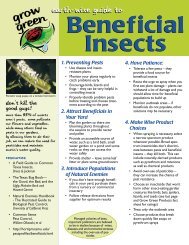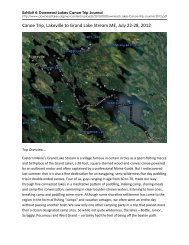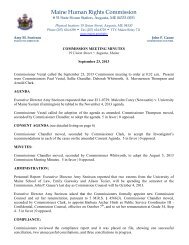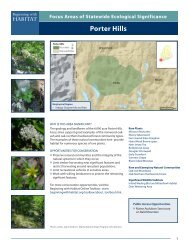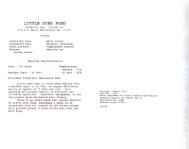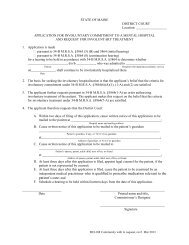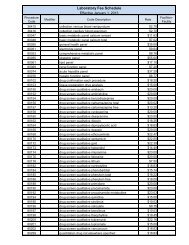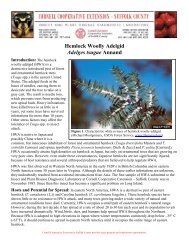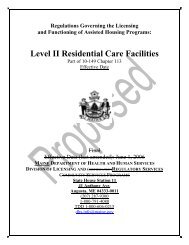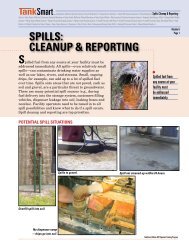TICK-BORNE DISEASES IN MAINE - Maine.gov
TICK-BORNE DISEASES IN MAINE - Maine.gov
TICK-BORNE DISEASES IN MAINE - Maine.gov
Create successful ePaper yourself
Turn your PDF publications into a flip-book with our unique Google optimized e-Paper software.
summer fever Algorithm<br />
Algorithm for Differentiating Tick-borne Diseases in <strong>Maine</strong><br />
This algorithm is intended for use as a general guide when pursuing a diagnosis.<br />
It does not replace the physician’s clinical judgment or the need for definitive<br />
laboratory testing.<br />
Patient resides, works, or recreates in an area likely to have ticks and is exhibiting fever,<br />
headache, malaise and/or lymphadenopathy<br />
Does the patient have a rash?<br />
Other Considerations<br />
• Rash occurs in 70-80% of Lyme disease<br />
YES<br />
NO<br />
patients.<br />
• Rash occurs in less than 10% of<br />
Blood smear review<br />
Complete<br />
blood count (CBC)<br />
anaplasma patients.<br />
• Rash occurs in less than 40% of adult<br />
Ehrlichia patients, and less than 60%<br />
of children.<br />
• Rash occurs in 70-80% of RMSF patients<br />
but only appears several days after onset<br />
of febrile illness.<br />
• Hyponatremia may occur with RMSF<br />
or tularemia.<br />
• Lyme disease can present as Bell’s palsy,<br />
Erythema migrans (single or<br />
multiple lesions)<br />
Lyme disease<br />
Maculopapular<br />
May be anaplasmosis (rash is<br />
very uncommon), further tests<br />
needed<br />
Parasites in RBC*<br />
Babesiosis<br />
*If patient has an international<br />
travel history, malaria should<br />
be ruled out<br />
Morulae in WBC<br />
May be anaplasmosis (seen<br />
in less than 50% of serious<br />
cases), further tests needed<br />
Normal CBC<br />
May be Anaplasma, RMSF,*<br />
tularemia**<br />
or Lyme disease, further<br />
tests needed<br />
* RMSF—thrombocytopenia<br />
may be observed<br />
** tularemia—WBC normal or<br />
elevated, thrombocytopenia<br />
may be observed<br />
further tests needed.<br />
• Ulceroglandular tularemia usually presents<br />
as regional lymphadenopathy with a small<br />
ulceration distally, further tests needed.<br />
• Coinfections involving Lyme disease,<br />
babesiosis, and/or anaplasmosis may occur<br />
because a single deer tick may carry<br />
multiple pathogens.<br />
• Consider pneumonic tularemia in any<br />
patient presenting with communityacquired<br />
pneumonia who resides on,<br />
or has recently visited, Martha’s Vineyard,<br />
Massachusetts.<br />
Cutaneous ulcer<br />
May be tularemia<br />
(ulceroglandular), further tests<br />
needed<br />
Maculopapular to Petechial*<br />
May be RMSF, or ehrlichiosis,<br />
further tests needed<br />
*If petechial rash of palm and<br />
sole (characteristic of RMSF)<br />
is present, treat immediately<br />
WBC low or normal,<br />
thrombocytopenia,<br />
low hematocrit,<br />
elevated reticulocytes<br />
May be anaplasmosis or<br />
babesiosis, further tests<br />
needed<br />
Normal hematocrit,<br />
thrombocytopenia, leukopenia<br />
May be anaplasmosis or<br />
ehrlichiosis, further tests<br />
needed



